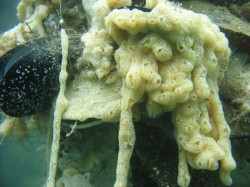When you consider the field of citizen science you probably think of it as something you do by collecting data, taking pictures, finding plants or animals, or uploading sightings. There’s a new form of citizen science emerging called a “thought experiment.” You may be familiar with thought experiments like that of “Schrödinger’s Cat” or Einstein’s “Chasing a Beam of Light” which use theoretical reasoning to solve a problem. However, thought experiments may also be applied to biological science because you are considering a hypothesis, principle, or theory and its consequences as it applies to a scientific application. This theory may or may not be implemented. The big difference between traditional citizen science and a thought experiment is that thought experiments do not use direct observation or experiments, they rely completely on theory. Thought experiments also have the advantage that they can be done from anywhere, which make them accessible to anyone who might be interested in trying them out. You can do them in a classroom, on the metro, or on an exercise bike.
A Bit of Background for This Thought Experiment
The Smithsonian Environmental Research Center’s Marine Invasions Research Lab, located in Edgewater, MD, along with a field branch in Tiburon California have teamed up with the Alaska Department of Fish and Game, the US Fish and Wildlife Service, the University of Alaska Southeast, the National Oceanic and Atmospheric Administration, and San Francisco State University to monitor a creatively named species of invasive brackish water tunicate called “rock vomit,” or Didemnum vexillum. It’s thought that D. vexillum originated in Japan, but now it’s found all over the world and it’s an aggressive invader. SERC scientists first found it growing in the bay of Sitka Alaska in 2010 during a bioblitz.
Rock vomit is a big problem for native habitats and commercial fishermen because it grows in mats (in quickly moving water) and long strands (with low water movement) and covers everything in sight. This includes fishing nets, lines, docks, ship hulls, and all living sessile (non-moving) creatures on the bottom. Rock vomit literally blankets sponges, anemones, bryozoans, scallops, oysters, and mussels. Here is the USGS official page with images and descriptions.

How Does This Citizen Science Thought Project Work?
SERC scientists have been trying to determine how rock vomit spreads and what factors might influence its demise. You can read more about their work using treatments of fresh water, extremely salty water, lack of oxygen, acetic acid, and bleach in a controlled field setting as they try to find out what might work to control it. These researchers are asking you, as citizen scientists, to participate in a thought experiment project to help come up with a way to control rock vomit based on their findings. On the page listed above they give you some factors to consider such as treatment area, containment, limiting mortality of other species and outside the area, wind, waves, and tides. Your job is to think about these variables and to design a theoretical solution to the problem of this invasive species. Remember, the solution may or may not be implemented but your thoughts and theories could help solve a major invasive species problem!
If you would like to submit an idea please send your proposal to Monaca Noble (Noblem@si.edu) by December 16th. The lab will choose the best solution and post the winner on the Smithsonian Environmental Research Center website for Invasive Species.
Images: USGS.gov
If you’re looking for some scientific inspiration, try this paper:
McCann, LD, K Holzer, IC Davidson, GV Ashton, and GM Ruiz. 2013. Promoting invasive species control and eradication in the sea: options for managing the tunicate invader Didemnum vexillum in Sitka, Alaska. Marine Pollution Bulletin. Available online.
When not writing her blog The Infinite Spider, Karen McDonald is a guest blogger, curriculum developer, science content editor, and outdoor educator with over thirteen years in informal science education. She has an MS in Biology and a BS in Environmental Science and Philosophy. Currently she works for Smithsonian and contracts for Discovery Channel.


